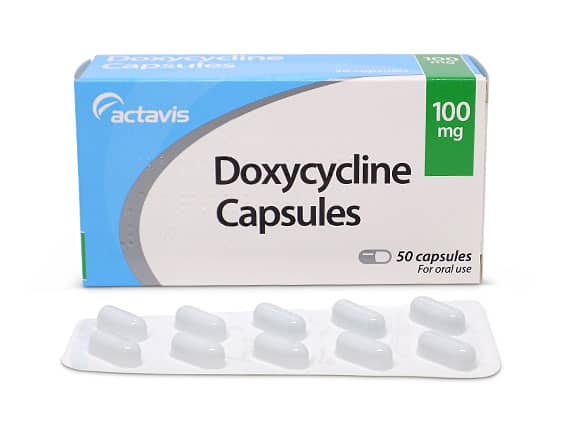Prophylactic Medication for Tick-Borne Illnesses
 While a number of tick-borne illnesses can be very serious (and in some instances, possibly life-threatening), there is only one illness that has shown to actually be able to be prevented by prophylactic medication: Lyme disease.
While a number of tick-borne illnesses can be very serious (and in some instances, possibly life-threatening), there is only one illness that has shown to actually be able to be prevented by prophylactic medication: Lyme disease.
According to numerous research studies and findings published in a host of medical journals around the world, the ONLY tick-borne illness which has shown to be effectively terminated by way of prophylactic antibiotics, is Lyme disease.
No other tick-borne illnesses have shown to be able to be managed with prophylaxis; and instead, are only able to be managed reactively (meaning, once signs or symptoms have begun to show).
For this reason, routine prophylaxis after a tick bite is NOT recommended, unless the following criteria are met. Guidelines from the Infectious Disease Society of America (IDSA) and the U.S. Centers for Disease Control and Infection (CDC) both only recommend prophylactic antibiotic therapy for adults and children older than 8 years, by way of either doxycycline, amoxicillin, or cefuroxime axetil (alternatively; azithromycin, clarithromycin, or erythromycin) so long as ALL of the following criteria are met:
- The attached tick is accurately identified as a nymph or adult stage Blacklegged “Deer” tick (Ixodes scapularis on the East coast; or Ixodes pacificus on the West coast).
. - The tick has been attached for at least 36 hours, as determined by the degree of engorgement of the tick or certainty about the time of exposure to the tick — and not simply by guessing according to when the individual was ‘outside last.’
. - Prophylaxis can be started within 72 hours of the time the tick was removed.
. - The local rate of infection of these ticks with Borrelia burgdorferi is at least 20% or higher (primarily ONLY includes areas in New England; as well as mid-Atlantic States, Minnesota, and Wisconsin).
. - Doxycycline treatment is not contraindicated.
PLEASE NOTE that numerous studies are showing that for an ENGORGED Ixodes tick (Deer tick), the current CDC guideline of a single dose *may NOT* be sufficient enough to eradicate the Lyme bacterium. Current ILADS guidelines recommend 100–200 mg of doxycycline, taken twice daily for 20 days for a known and verified Ixodes(Deer tick) bite regardless of degree of tick engorgement or local infection rates.
Dosing Information:
For adults and patients weighing at least 45 kg (99 pounds; or a typical 13 year old), a single dose of doxycycline (200 mg) is recommended for prophylaxis after tick attachment for prevention of Lyme disease. For children eight years of age and older (between 55 and 99 pounds), a single dose of doxycycline (4 mg/kg up to the adult dosage) is recommended.
Doxycycline is contraindicated in pregnant or lactating women as well as in young children due to the risk of possible effects on fetus bone formation and permanent tooth staining.
When (ALSO) to Give Medications Prophylactically:
Encourage patients to watch for fever, rash, or flu-like illness in the weeks after a tick bite. Location of tick exposure can guide the differential diagnosis. If a patient is suspected of acute tick-borne disease, including early Lyme disease or Rocky Mountain spotted fever, initiate treatment as soon as possible, rather than waiting for laboratory results, which may be insensitive in early illness.
WHAT THIS MEANS: As soon as signs and symptoms of either Lyme Disease or Rocky Mountain Spotted Fever appear, begin treatment immediately with a full 20–41 day regimen of Doxycycline (or other broad–spectrum prescription antibiotic).
Additional Recommendations
SPECIAL NOTICE: While current guidelines recommend ONE single dose of 200 mg Doxycycline as a prophylactic, recent laboratory data out of Johns Hopkins university (from 2020) has shown that a 7–day course of Doxycycline allows between 30% and 90% of the residual Lyme bacteria to keep growing.
For this reason, while the current CDC and IDSA guidelines still recommend a single prophylactic dose of Doxycycline, we recommend at 10–14 days of Doxycycline, based on current studies and research. Concurrently, we do realize that many healthcare practitioners (physicians) will most likely continue to only prescribe a single dose until the national guidelines change.
MEDICATIONS FOR CHILDREN: Kids are five times more likely than adults to die from tick-borne diseases like Rocky Mountain spotted fever (RMSF). Doctors often avoid prescribing doxycycline, the most effective RMSF treatment, for young children because the drug’s warning label cautions that tooth staining may be a side effect in children younger than 8 years. A new study published in The Journal of Pediatrics (2015) suggests that for patients with RMSF, this warning may be doing more harm than good.
As Doxycycline is a very strong, broad-spectrum antibiotic with many negative side effects (and is ill-advised for children under 8 and pregnant women), a single 500mg dose of Azithromycin; a 4-day course of Amoxicillin, or a 5-day course of Cefuroxime Axetil would be needed to approximate the efficacy of a single 200mg dose of Doxycycline.


